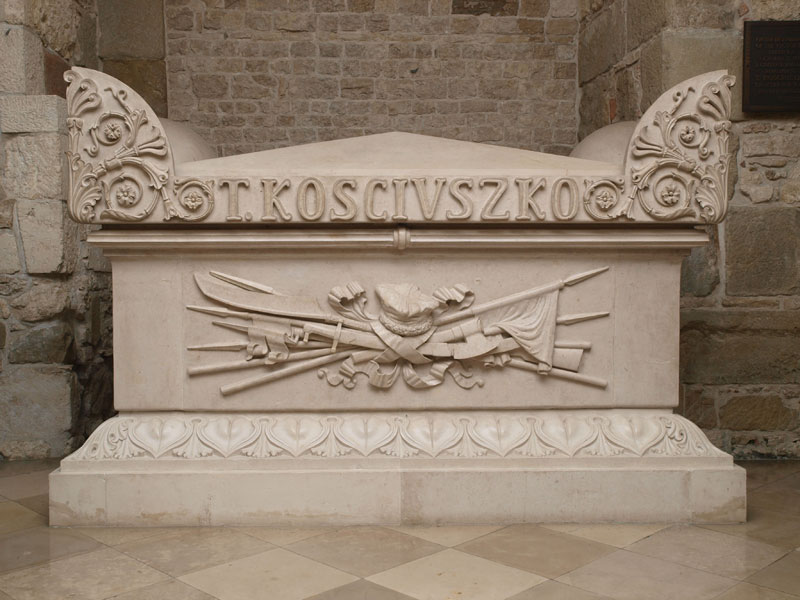General Thaddeus Kościuszko Grave (ISOB)
Details:
In the crypt alongside other Polish National hero graves. Isolated Burial
A marble engraved Sarcophagus; includes his name and furled flags.
The Isolated Burial (ISOB) is of Thaddeus Kościuszko, a General, who served in the American Army during the American Revolution.
From the National Park Service about Kościuszko service during the American Revolution:
Late in August 1776, Thaddeus Kościuszko stepped off a ship and onto the docks in Philadelphia, Pennsylvania. After making the acquaintance of Benjamin Franklin and proving his worth by designing blockades and fortresses along the Delaware River, Kościuszko was given the rank of colonel by Congress in October 1776. In December, he designed Fort Mercer in Red Bank, New Jersey. In the summer of 1777, he ordered the troops retreating from Ticonderoga to delay the British by felling trees and moving boulders onto the path, as well as diverting and damming streams to turn the woodland path into a swamp. In the autumn of 1777, Kościuszko’s structures and use of topography contributed to the American victory at Saratoga.
Reaching Fort West Point in New York in March 1778, Kościuszko heavily fortified the base, as well as the section of the Hudson River that it overlooked. It was here that he met the witty and charismatic Agrippa Hull, a black New-Englander who would accompany Kościuszko for the rest of the war as his servant, assistant, and companion.
Finally leaving West Point late in the summer of 1780, the engineer traveled south to meet up with his friend and mentor, General Horatio Gates. Gates, however, was soon replaced by General Nathanael Greene, whom Kościuszko would serve for the rest of the war. As the British general Lord Cornwallis chased Greene’s forces around the Carolinas, Kościuszko proved himself invaluable by leading the troops through shortcuts and building a fleet of small boats which could be used to transport supplies and soldiers across rivers.
In June 1781, while attempting to burrow closer to an enemy fort known as “Ninety-Six,” Kościuszko was bayoneted in the buttocks while inspecting his trench. He soon recovered from the criticism of his failed plan, as well as the embarrassment from his wound. In early autumn 1782, as the war was drawing to a close, Kościuszko was made a field commander. On November 14, Kościuszko led a skirmish outside Charleston, South Carolina, one of the last military skirmishes of the American Revolutionary War.
Monument Text:
T. KOSCIUSZKO
Commemorates:
People:
Units:
United States Army
Wars:
American Revolutionary War
Other images :


